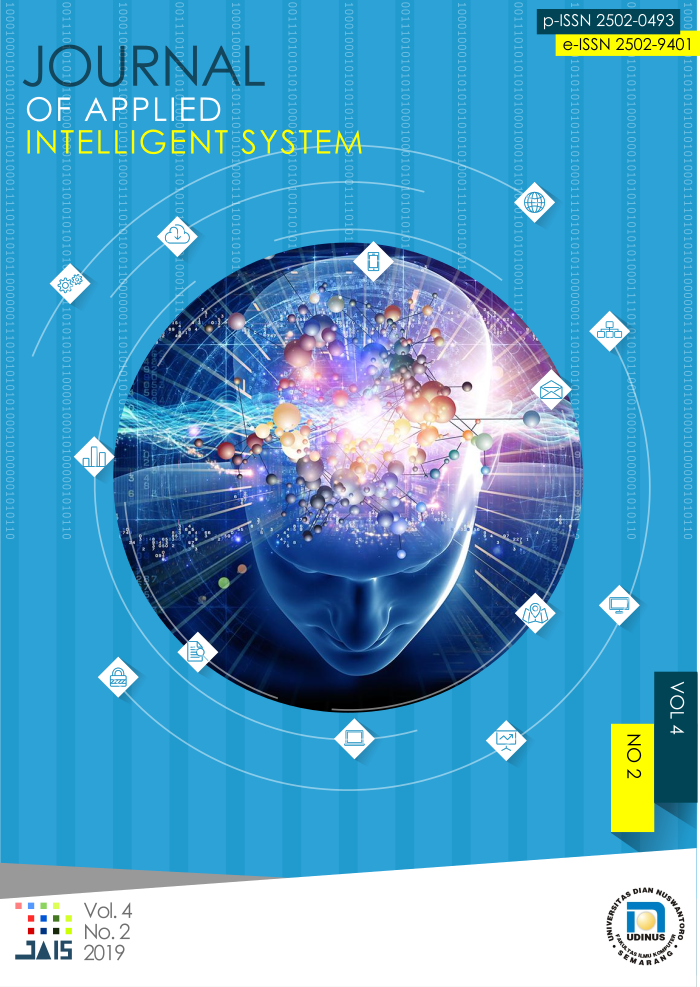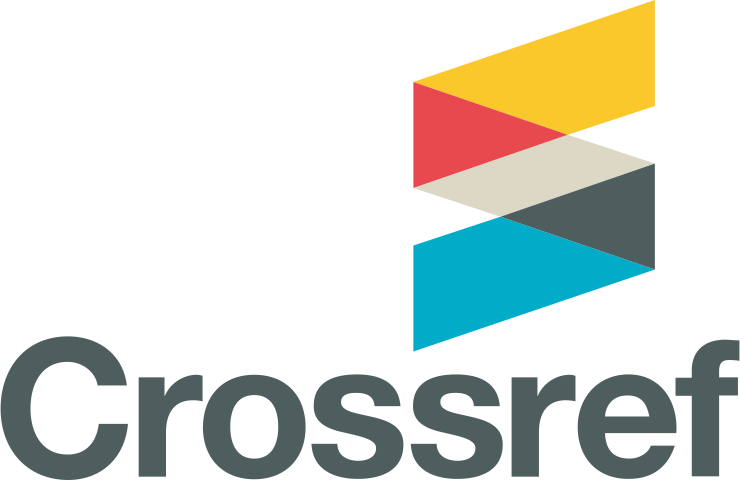Diagnosis Of Heart Disease Using K-Nearest Neighbor Method Based On Forward Selection
DOI:
https://doi.org/10.33633/jais.v4i2.2749Abstract
Heart is one of the essential organs that assume a significant part in the human body. However, heart can also cause diseases that affect the death. World Health Organization (WHO) data from 2012 showed that all deaths from cardiovascular disease (vascular) 7.4 million (42.3%) were caused by heart disease. Increased cases of heart disease require a step as an early prevention and prevention efforts by making early diagnosis of heart disease. In this research will be done early diagnosis of heart disease by using data mining process in the form of classification. The algorithm used is K-Nearest Neighbor algorithm with Forward Selection method. The K-Nearest Neighbor algorithm is used for classification in order to obtain a decision result from the diagnosis of heart disease, while the forward selection is used as a feature selection whose purpose is to increase the accuracy value. Forward selection works by removing some attributes that are irrelevant to the classification process. In this research the result of accuracy of heart disease diagnosis with K-Nearest Neighbor algorithm is 73,44%, while result of K-Nearest Neighbor algorithm accuracy with feature selection method 78,66%. It is clear that the incorporation of the K-Nearest Neighbor algorithm with the forward selection method has improved the accuracy result. Keywords - K-Nearest Neighbor, Classification, Heart Disease, Forward Selection, Data MiningReferences
N. A. Widiastuti, S. Santosa, and C. Supriyanto, “Algoritma Klasifikasi Data Mining Naive Bayes Berbasis Particle Swarm Optimization Untuk Deteksi Penyakit Jantung,†J. Pseudocode, vol. 1, no. 1, pp. 11–14, 2014.
DEPKES, “Penyakit Jantung Penyebab Kematian Tertinggi, Kemenkes Ingatkan CERDIK,†29 Juli 2017, 2017. [Online]. Available: http://www.depkes.go.id/article/view/17073100005/penyakit-jantung-penyebab-kematian-tertinggi-kemenkes-ingatkan-cerdik-.html. [Accessed: 14-Feb-2020].
L. Ghani, M. D. Susilawati, and H. Novriani, “Faktor Risiko Dominan Penyakit Jantung Koroner di Indonesia,†Bul. Penelit. Kesehat., vol. 44, no. 3, pp. 153–164, 2016.
P. Sharma, K. Saxena, and R. Sharma, “Heart disease prediction system evaluation using C4.5 rules And Partial Tree,†Adv. Intell. Syst. Comput., vol. 411, no. Cvd, pp. 285–294, 2016.
F. Maspiyanti and J. Gatc, “Diagnosa Penyakit Jantung Pada Ponsel Menggunakan Pohon Keputusan,†J. Teknol. Terpadu, vol. 1, no. 1, pp. 13–20, 2015.
B. Rifai, “Algoritma Neural Network Untuk Prediksi Penyakit Jantung,†Techno Nusa Mandiri, vol. IX, no. 1, pp. 1–9, 2013.
M. Lestari, “Penerapan Algoritma Klasifikasi Nearest Neighbor (K-NN) untuk Mendeteksi Penyakit Jantung,†Fakt. Exacta, vol. 7, no. September 2010, pp. 366–371, 2014.
R. Rakhmat Sani, J. Zeniarja, and A. Luthfiarta, “Penerapan Algoritma K-Nearest Neighbor pada Information Retrieval dalam Penentuan Topik Referensi Tugas Akhir,†J. Appl. Intell. Syst., vol. 1, no. 2, pp. 123–133, 2016.
R. R. Sani, J. Zeniarja, and A. Luthfiarta, “Pengembangan Aplikasi Penentuan Tema Tugas Akhir Berdasarkan Data Abstrak Menggunakan Algoritma K-Nearest Neighbor,†in Proceeding SENDI_U, 2016, vol. 2, pp. 103–111.
L. D. Utami and R. S. Wahono, “Integrasi Metode Information Gain untuk Seleksi Fitur dan AdaBoost untuk Mengurangi Bias pada Analisis Sentimen Review Restoran Menggunakan Algoritma Naive Bayes,†J. Intell. Syst., vol. 1, no. 2, pp. 120–126, 2015.
S. Natalius, “Metoda Naïve Bayes Classifier dan Penggunaannya pada Klasifikasi Dokumen,†J. Sist. Inf. Sekol. Tinggi Elektro dan Inform. Inst. Teknol. Bandung, no. 3, pp. 1–5, 2011.
E. Saleh, E. Noor, and T. Djatna, “Prediksi Masa Kedaluwarsa Wafer Dengan Artificial Neural Network (ANN) Berdasarkan Parameter Nilai Kapasitansi,†vol. 33, no. 4, pp. 450–457, 2013.
J. Zeniarja, A. Luthfiarta, and C. Supriyanto, “Aplikasi Pencarian Perguruan Tinggi Dengan Algoritma K-Nearest Neighbor Berbasis Information Retrieval Dan Geographic Information System,†in Prosiding SINTAK 2017, 2017, pp. 137–146.
A. Salam, J. Zeniarja, and R. S. U. Khasanah, “Analisis Sentimen Data Komentar Sosial Media Facebook Dengan K-Nearest Neighbor ( Studi Kasus Pada Akun Jasa,†in Prosiding SINTAK, 2018, pp. 480–486.
S. Tabakhi, P. Moradi, and F. Akhlaghian, “An unsupervised feature selection algorithm based on ant colony optimization,†Eng. Appl. Artif. Intell., vol. 32, pp. 112–123, 2014.
W. Supriyanti, Kusrini, and A. Amborowati, “Perbandingan Kinerja Algoritma C4.5 Dan Naive Bayes Untuk Ketepatan Pemilihan Konsentrasi Mahasiswa,†J. Inf. Politek. Indonusa Surakarta, vol. 1, no. 3, pp. 61–67, 2016.
A. Rohman, “Model Algoritma K-Nearest Neighbor (K-NN) Untuk Prediksi Kelulusan Mahasiswa,†Neo Tek., vol. 1, no. 1, pp. 1–9, 2015.
E. Hardiyanto and F. Rahutomo, “Studi Awal Klasifikasi Artikel Wikipedia Bahasa Indonesia Dengan Menggunakan Metoda K-Nearest Neighbor,†in Seminar Nasional Terapan Riset Inovatif, 2016, vol. 01, pp. 158–165.
A. M. Zamani, B. Amaliah, and A. Munif, “Implementasi Algoritma Genetika pada Struktur Backpropagation Neural Network untuk Klasifikasi Kanker Payudara,†J. Tek. ITS, vol. 1, pp. 222–227, 2012.
Downloads
Published
Issue
Section
License
- Authors retain copyright and grant the journal right of first publication with the work simultaneously licensed under a Creative Commons Attribution License that allows others to share the work with an acknowledgment of the work's authorship and initial publication in this journal.
- Authors are able to enter into separate, additional contractual arrangements for the non-exclusive distribution of the journal's published version of the work (e.g., post it to an institutional repository or publish it in a book), with an acknowledgment of its initial publication in this journal.
- Authors are permitted and encouraged to post their work online (e.g., in institutional repositories or on their website) prior to and during the submission process, as it can lead to productive exchanges, as well as earlier and greater citation of published work (See The Effect of Open Access).









